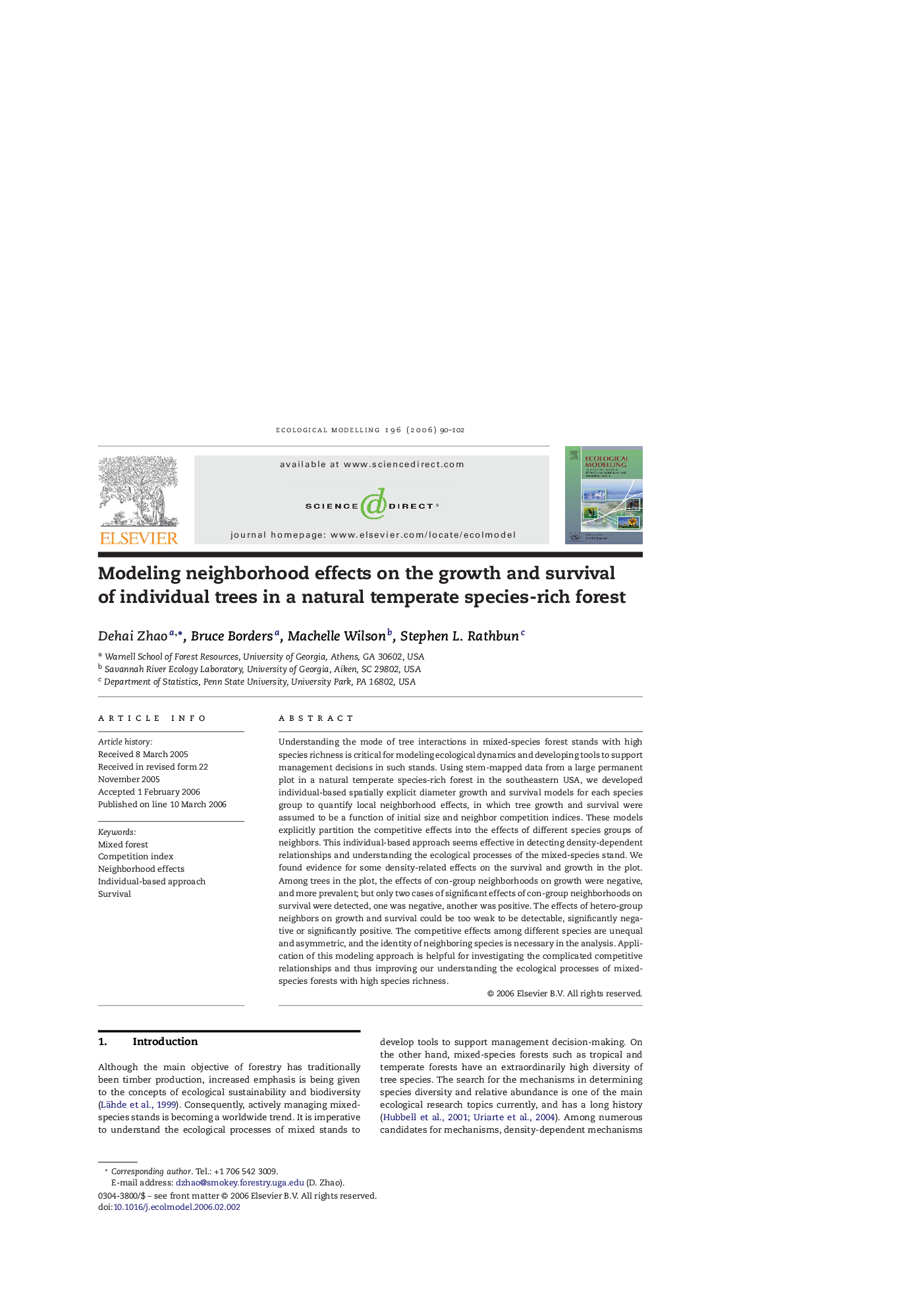| کد مقاله | کد نشریه | سال انتشار | مقاله انگلیسی | نسخه تمام متن |
|---|---|---|---|---|
| 4379034 | 1617562 | 2006 | 13 صفحه PDF | دانلود رایگان |

Understanding the mode of tree interactions in mixed-species forest stands with high species richness is critical for modeling ecological dynamics and developing tools to support management decisions in such stands. Using stem-mapped data from a large permanent plot in a natural temperate species-rich forest in the southeastern USA, we developed individual-based spatially explicit diameter growth and survival models for each species group to quantify local neighborhood effects, in which tree growth and survival were assumed to be a function of initial size and neighbor competition indices. These models explicitly partition the competitive effects into the effects of different species groups of neighbors. This individual-based approach seems effective in detecting density-dependent relationships and understanding the ecological processes of the mixed-species stand. We found evidence for some density-related effects on the survival and growth in the plot. Among trees in the plot, the effects of con-group neighborhoods on growth were negative, and more prevalent; but only two cases of significant effects of con-group neighborhoods on survival were detected, one was negative, another was positive. The effects of hetero-group neighbors on growth and survival could be too weak to be detectable, significantly negative or significantly positive. The competitive effects among different species are unequal and asymmetric, and the identity of neighboring species is necessary in the analysis. Application of this modeling approach is helpful for investigating the complicated competitive relationships and thus improving our understanding the ecological processes of mixed-species forests with high species richness.
Journal: Ecological Modelling - Volume 196, Issues 1–2, 10 July 2006, Pages 90–102